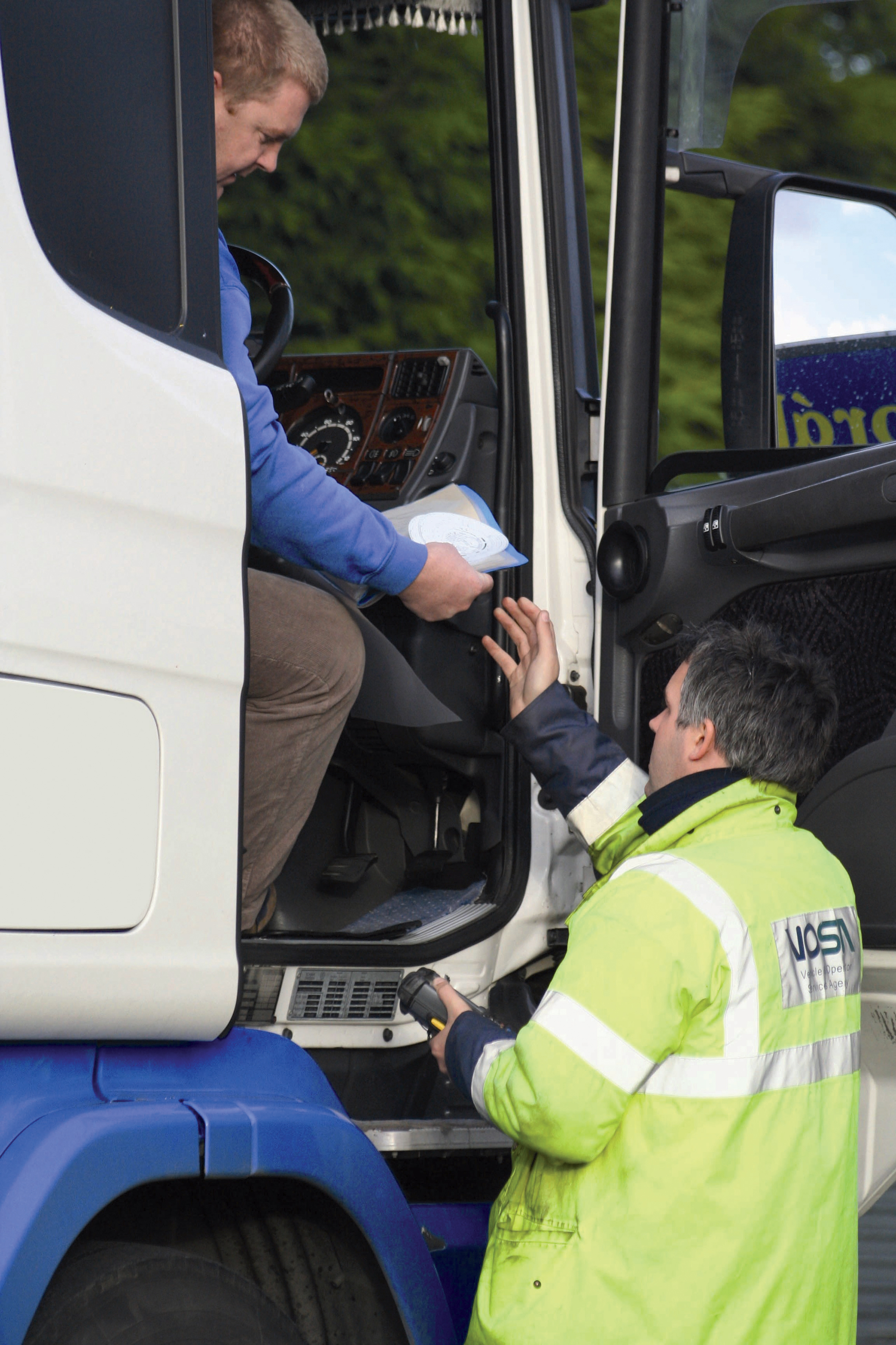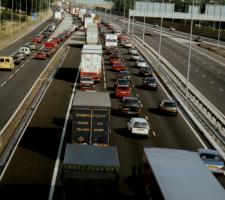
The Vehicle and Operator Services Agency works hard to maintain the legality and safety of commercial vehicles on the UK's roads
A look at the current status of cross-border enforcement of commercial vehicle operation in the European Union and a look at what still needs to happen to realise a coherent working system
In the UK, the establishment of a national Lorry Road User Charging (LRUC) scheme is once again a possibility. LRUC was a manifesto item of the Conservative Party and following the coming to power in May of a new Conservative/Liberal Democrat coalition government it is potentially back on the national political agenda. However, LRUC is just one initiative which serves to illustrate from a national perspective just how much still needs to be resolved, particularly when it comes to commercial vehicles, to improve cross-border enforcement of traffic offences in theThe scheme was originally proposed by the former Labour government back in 2002 as an answer to concerns from within the UK road haulage industry and elsewhere that the so-called 'fuel price differential' was giving overseas hauliers an unfair competitive advantage; the higher levels of duty which the UK levies on fuel mean that foreign hauliers can save significant sums over their UK competitors by fuelling on the European mainland before then operating in the UK. The first LRUC scheme was abandoned in 2005, when it was announced that the UK Government would look instead to introduce a national distance-based charging scheme for all vehicles, on all roads, all the time - an idea also since consigned to the dustbin by the former administration.
Levelling the playing field
Internationally, the UK has an enviable record of maintaining the legality and safety of commercial vehicles on the country's roads. The Vehicle and Operator Services Agency (VOSA) works hard to maintain this and domestic operators are subject to rigorous checks on their vehicles and activities. Compliance with UK and EU regulations is generally very good, therefore. However, short of increasing the number of roadside checks what is harder to determine is the extent to which operators from outside the UK but travelling on the UK's roads are equally compliant with regulations.Fuel prices differentials are not the only potential source of unfair competition and any operators who flout or ignore rules and regulations not only compromise safety; provided they do not get caught, they often incur significantly lower costs in comparison with their more legally adherent peers. The issue for LRUC is how to truly level the playing field in these circumstances and allow UK hauliers to remain cost-competitive.
However from an LRUC (and a wider charging and tolling) point of view, there is still no effective way of retrospectively enforcing against those who don't want to pay once they have left the country. If a vehicle can be stopped at the roadside, steps can usually be taken to ensure compliance. But once a vehicle leaves the UK's shores, enforcement officials, while still being able to identify miscreants, still have no effective means of completing any legal follow-up. Whether UK enforcement officials will look to bar from re-entering the country those who have offended previously is a matter of national and not EU law.
Making a distinction
A major difference with cross-border enforcement when it comes to commercial vehicle operators is the granting of licenses to operate and how this is supposed to happen in the EU. Reissuance of an operator's license is the responsibility of the individual Member State. One of the criteria for re-issuance is that operators have to be 'of good repute'. This means that they must demonstrate that they conduct business responsibly: that they do not habitually flout the laws of the road or, where there have been transgressions, fines have been paid and/or remedial action has been taken to guard against reoccurrences going forward. Persistent offenders who overload their vehicles or ignore driver time working regulations, for example, run the very real risk of not being granted a license to operate in future.The system works well in theory. However in order to be able to make a true judgement on whether an operator deserves to be allowed to carry on its business, a country's issuing agency needs to have an accurate picture of a company's operations and in practice there are problems. At present, there is no consistent way of finding out what offences if any have been committed abroad. An operator might diligently obey the letter of the law when on its own turf but if in other countries it consistently runs vehicles at axle weights which are illegal or unsafe, or if its drivers regularly show a cavalier disregard for working time directives, there is simply no way of knowing that it does so.
The EU has put into statute a number of pieces of legislation designed to address the issue. It should be noted that many of these pieces of legislation are Regulations and are therefore more prescriptive than Directives, which tend to be more aspirational by comparison. Among these is the requirement for each Member State to establish a national electronic register of operators. Most Member States now have something up and running but work remains to be done to unify these to a common minimum standard. A set of guidelines for this does exist and was the product of the TUNER Project; agreement on taking these forward (or anything which might succeed them) is currently being progressed.
Operational perspectives
Most of the current debate centres on how to interconnect the various registers. One of the issues is that for sound operational reasons the EC (European Commission) wants to use existing systems. Which system is the most appropriate is another source of debate. EUCARIS (the EUropean CAR and driving licence Information System) is a contender in that it is analogous with the national electronic registers and can provide the required level of interconnectivity. EUCARIS was designed to allow countries to share their car and driving licence registration information, helping to fight car theft and registration fraud. It is live, has been running for several years and works extremely well. Another option is TACHOnet, the EC's central hub for the exchange of information between the national administrations responsible for issuing tachographs to enforce rest periods and monitor the driving times of professional drivers; extending TACHOnet's functionality would also provide a workable solution. The way forward is the subject of debate at present.Most of the current debate centres on how to interconnect the various registers. One of the issues is that for sound operational reasons the EC (European Commission) wants to use existing systems. Which system is the most appropriate is another source of debate. EUCARIS (the EUropean CAR and driving licence Information System) is a contender in that it is analogous with the national electronic registers and can provide the required level of interconnectivity. EUCARIS was designed to allow countries to share their car and driving licence registration information, helping to fight car theft and registration fraud. It is live, has been running for several years and works extremely well. Another option is TACHOnet, the EC's central hub for the exchange of information between the national administrations responsible for issuing tachographs to enforce rest periods and monitor the driving times of professional drivers; extending TACHOnet's functionality would also provide a workable solution. The way forward is the subject of debate at present.
The EC is trying to ensure that those operators who commit offences outside their own national borders do not go unpunished. It has taken a slightly different approach than for example the enforcement of red light running offences largely because of procedural opportunities afforded through the regular operating licence renewal process.
Rather than punish unduly and suspend operations for a single offence, the linking of licences to the 'of good repute' litmus test gives companies a chance to get their houses in order. So for instance arriving somewhere with incorrect paperwork can be seen in context against persistent overloading or breaching of drivers' hours regulations. It builds in latitude for larger operators while owner-drivers, who sometimes tend not to appear so readily on inspectors' radar, can expect to be subject to the same rules and constraints as bigger companies. Again, this levels the playing field.
From the inspection agencies' point of view, there is an opportunity to operate a much more targeted risk register which can also be seen by operators to be fairer. An operation which is seen to be operating on the edges of legality can be made subject to more frequent site inspections. Conversely, one which demonstrates good practice can be rewarded by seeing the periods between inspections extended.
Next steps
There is a timetable for the setting up of national electronic registers of road transport undertakings with common minimum content as agreed under EU regulations. It is intended that these be in place by late 2012. However, the current debate needs to be progressed vigorously and several outstanding decisions made if this timetable can ever hope to be adhered to.At the same time, initiatives such as LRUC (if it does happen) need to reflect on how they will deal with vehicles from outside their national borders and/or how they will influence the EU's lawmakers to ensure that the kinds of offences detailed in this article are included in any future cross-border enforcement legislation.












